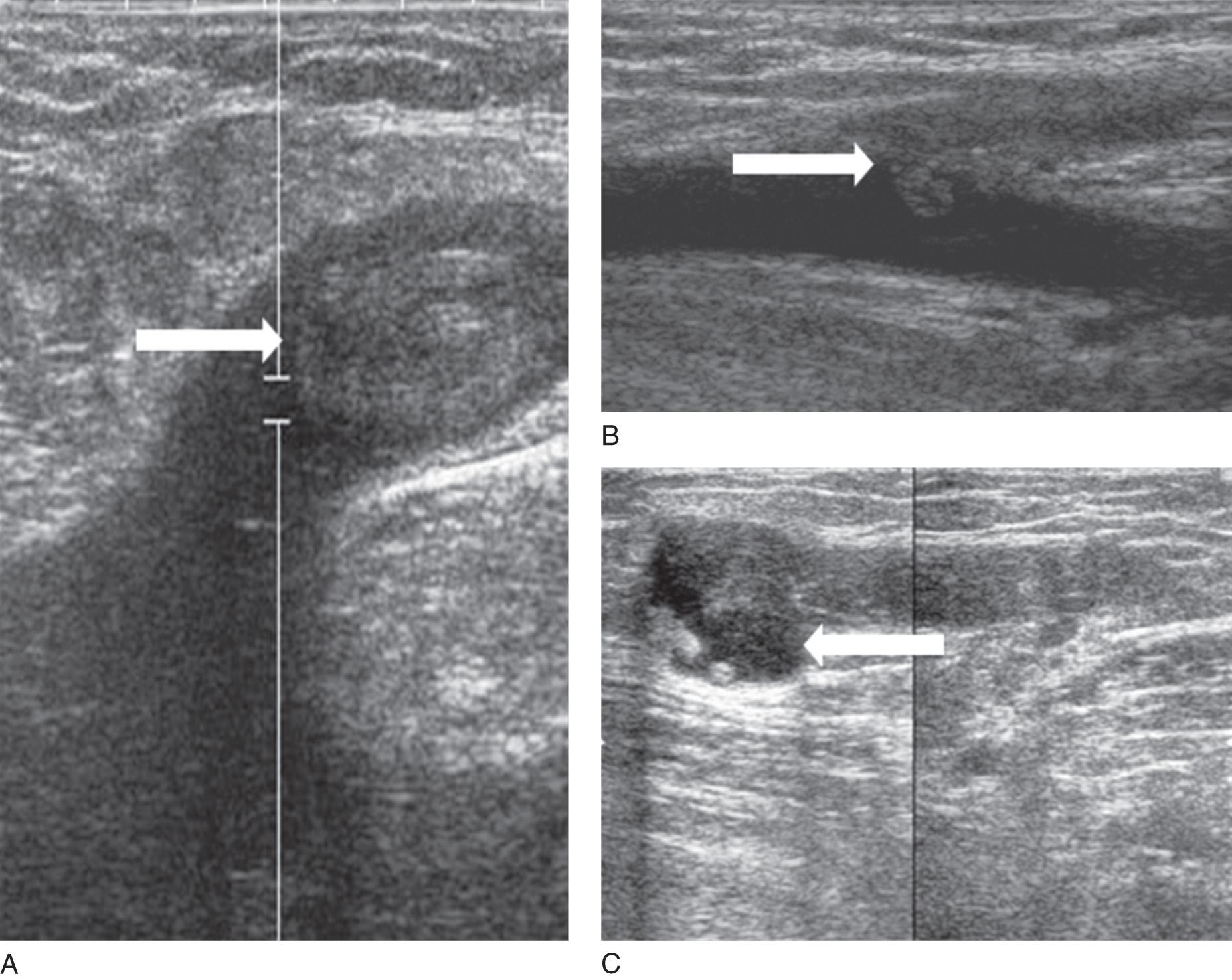Physical Address
304 North Cardinal St.
Dorchester Center, MA 02124
Endothermal ablation techniques used to treat superficial venous reflux, such as endovenous laser ablation (EVLA) and radiofrequency ablation (RFA), use heat to induce endothelial injury. This results in a combination of thrombosis, fibrosis, subsequent vein contracture, and eventual occlusion of the treated vein. As stated, a component of this mechanism involves thrombus formation, which may vary depending on the modality or technique used. The thrombus that forms may propagate into the contiguous deep vein junction, most commonly the saphenofemoral junction, and is thus designated as an endothermal heat-induced thrombosis (EHIT). EHIT is a relatively novel entity that has no equivalent from the era of surgical ligation and stripping.
EHIT is classified according to the extent of central propagation of thrombus into the respective deep vein lumen. The classification scheme was not well delineated initially, and earlier reports used the term deep venous thrombosis (DVT) but without clear characterization of the pathology being evaluated. Based on a combination of the previous reports as well as newer information that specifically referred to the concept of EHIT, the incidence has ranged from 0% to 16%.
The natural history of EHIT remains poorly defined, particularly when one evaluates the subgroups within the EHIT classification. Moreover, this is further complicated by taking into account the truncal vein that is being treated. Given the poorly defined natural history, there is little consensus regarding postprocedural surveillance or treatment for EHIT. The data will be reviewed in the chapter herein.
EHIT refers to the central propagation of thrombus relative to the treated refluxing truncal vein. Endothermal heat-induced explicitly states that the entity of EHIT relates to thermal ablation technologies. Traditionally, these would include EVLA and RFA. Other techniques and modalities may be applicable but are not necessarily governed by the same pathophysiology, natural history, or even treatment. These include foam, glue, steam, mechanicochemical ablation (MOCA), and so on. The entity specifically refers to thrombosis as it relates to the respective deep vein. An argument can be made that all thermal ablation techniques result in superficial vein thrombus of the treated superficial vein. Therefore implicit in the definition of EHIT is the involvement of the respective deep vein. Also implicit in the definition is the acute nature of the pathology. It is “heat-induced,” and therefore the entity needs to be identified in the periprocedural period. Lastly, because it is also a heat-induced process directly related to a specific modality of treatment, the thrombosis should be contiguous with the treated vein. For example, an isolated gastrocnemius vein DVT following endothermal ablation of the great saphenous vein (GSV) with access obtained in the thigh would not fall under the definition of an EHIT.
The classification scheme was alluded to in the introduction, and it is predicated on fulfilling the criteria noted in the definition section. The classification scheme was derived because of the potential for differences in outcomes, and therefore treatments, depending on the extent of the central propagation of thrombus. It is also predicated on central propagation of thrombus as measured with the patient in the upright position. This is critical, because the classification level may change when the evaluation is performed in an upright as compared with a supine position, given that the thrombus may retract away from the deep vein when the patient is erect. The classification scheme is as such ( Fig. 16.1 ):
Up to and including the respective deep vein junction
Propagation into the respective deep vein but comprising less than 50% of the deep vein lumen
Propagation into the respective deep vein but comprising more than 50% of the deep vein lumen
Occlusive deep vein thrombus, contiguous with the treated truncal vein
The most common forms of EHIT are propagation into the common femoral vein following treatment of the GSV or propagation into the popliteal vein following treatment of the small saphenous vein (SSV). The same would apply to treatment of all the truncal veins emanating from the common femoral vein (e.g., anterior accessory GSV).

With regards to other anomalies or variants, such as a duplicated deep venous system, central propagation into the contiguous vein would be considered an EHIT.
Because of the low reported incidence in the literature, the development of a DVT following endothermal ablation of a perforator vein has not been well described. Moreover, the drainage systems are myriad, and drainage can be into any of the calf muscle veins, as well as the named axial deep veins, and therefore thrombosis, as it relates to treatment of perforator veins, is generally excluded from discussions of EHIT.
Become a Clinical Tree membership for Full access and enjoy Unlimited articles
If you are a member. Log in here